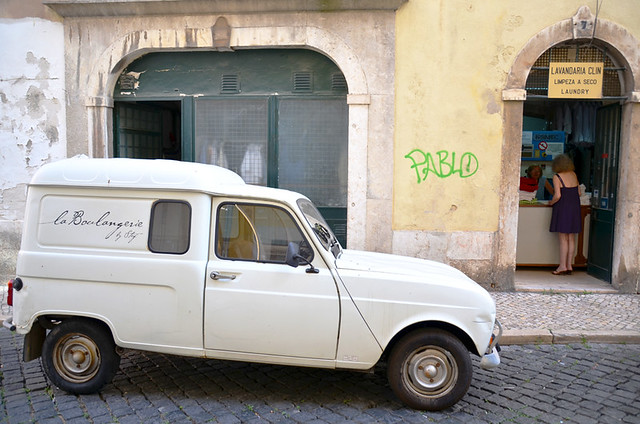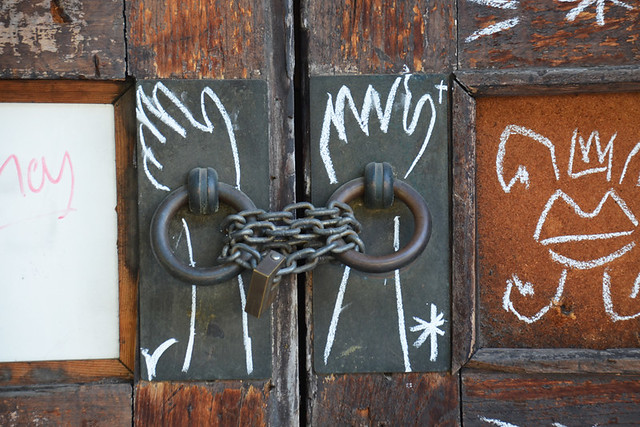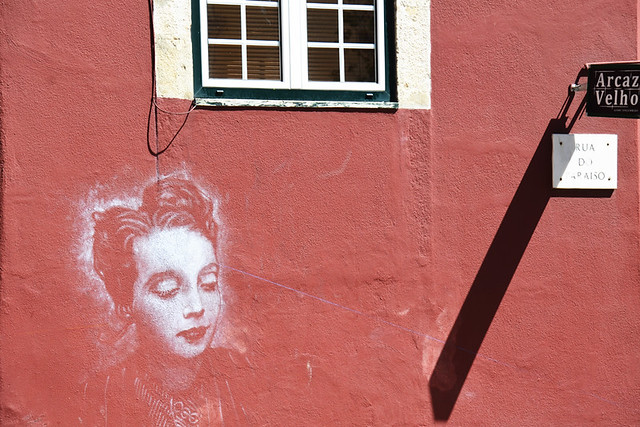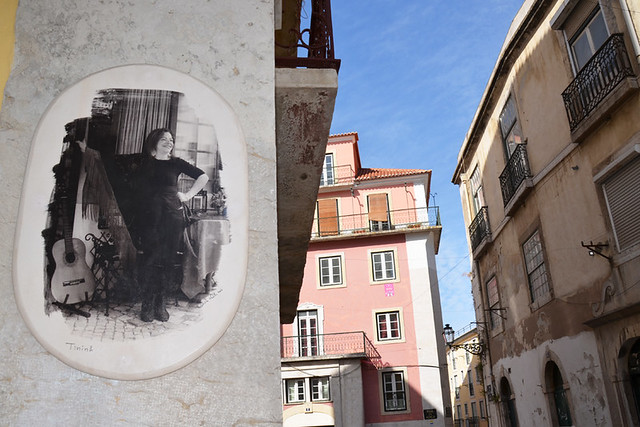Eyes are wondrous things. In theory, assuming they’re functioning properly, they show each us the same image from whichever canvas we happen to be standing in front of at any particular time.
In theory.
But something strange happens when light particles flow through those corneas; swirling, curving, and eventually taking form… all in far less than, well, the blink of an eye. The images which materialise should be the same as those being viewed by the person/s next to us, but that isn’t always the case. Here’s a thought-provoking line I just read.
The eyes look, but the brain sees.

Like a sculptor, each of our brains mould those light rays to create details that might be unique to us. Basically, we all see things differently. Which is why one person might consider some of Lisbon’s streets to be grungy, messy, ugly… “ramshackle and broken places” as one less than enamoured writer put it, unimpressed with the vision of dirty streets and crude street art the light particles created in their mind.
Where they see squalor and a depressed urban landscape in some raggedy streets and obscure alleys, I see a raw, gritty, honest beauty – a down to earth yin to the yang of the city’s grand architecture. This Jekyll and Hyde character partly makes Lisbon the compelling city it is. It is an essential aspect of its nature. This is, after all, the city of the count and the prostitute.

This IS Lisbon
If one work of urban art encapsulates Lisbon, it is the mural of the Escadinhas de São Cristóvão in the Mouraria district. The calçada steps are grubby and crude graffiti blends with more artistic images on the mouldy walls lining the stairs. And it all works because these gritty stairs are partly what Lisbon is all about. The mural, created by a group of local artists, illustrates the richness of these labyrinthine neighbourhoods. Saudade wasn’t born in the city’s more immaculate neighbourhoods with their elegant town houses. It was a product of these not so mean streets.

Funky funiculars
I have mixed feelings about the ‘customisation’ of Lisbon’s funiculars. It’s hard not to view the ‘artwork’ which masks the customary yellow surfaces as just vandalism, especially when compared and contrasted with the truly artistic, and sanctioned, street art which decorates part of the Ascensor da Glória route. But it is something you come to subliminally accept as part of the urban Lisbon landscape. The debased carriages create a mental image of what Sol Yurick’s New York superimposed on a classical European city might look like.

Remove the shackles
Sometimes you have to look beyond the superficial simplicity of scrawled graffiti. There is poetry and political expression everywhere. Even the most primitive illustration may give some insight into the city’s past and present.

Strange bedfellows
There’s a definite Alice Through the Looking Glass vibe about the gable end artwork which completely distracts from the seriousness of the scenes outside São Bento Palace, the seat of the Portuguese Parliament. It might look whimsical, almost as though the giant face is winking knowingly at pomp and circumstance. But in fact the face, by a Portuguese Banksy known as Drawing Jesus, is another comment on Lisbon’s personality – its features represent an amalgamation of Europe, Asia, and Africa.

Soulful streets
Some of the street artwork is quite hauntingly beautiful. Saudade flows from this image on the fringes of the Alfama district. Its soft-focus lines lend it an almost ghostly appearance – possibly it’s a former fadista gazing mournfully along streets through which her melancholic songs were once respectfully carried aloft in the breeze.

Joyful streets
In a few neighbourhoods, local characters are immortalised in evocative black and white prints on walls. It’s a celebration of working life in the city, of the people who are and have been its beating heart. They act as a pictorial storyboard, telling tales of recent social history, turning the down-to-earth streets into a living museum, albeit one whose walls have peeling plaster.

Art in the maze
Rich pickings are to be found on the walls of the largos, travessas and becos of the Alfama district. These range from sophisticated imagery and abstract art to traditional tiles, many referencing fado. My favourites show depictions of the count and Maria Severa. These images feature on postcards in Lisbon’s tourist shops. There’s often a slight adjustment to this one on cards; the count tends to be wearing stilettos – fado castico (chaotic fado).

The sheer volume of graffiti on Lisbon’s streets might be too much for some, but this is no pristine theme park designed purely for the pleasure of a transient population. Buildings with walls of peeling plaster and gritty art are as much a part of the city as the elegantly exquisite architecture. Yin or yang, princes or prostitutes? Which you see depends on what happens when those light particles take shape in your mind.




Be the first to comment